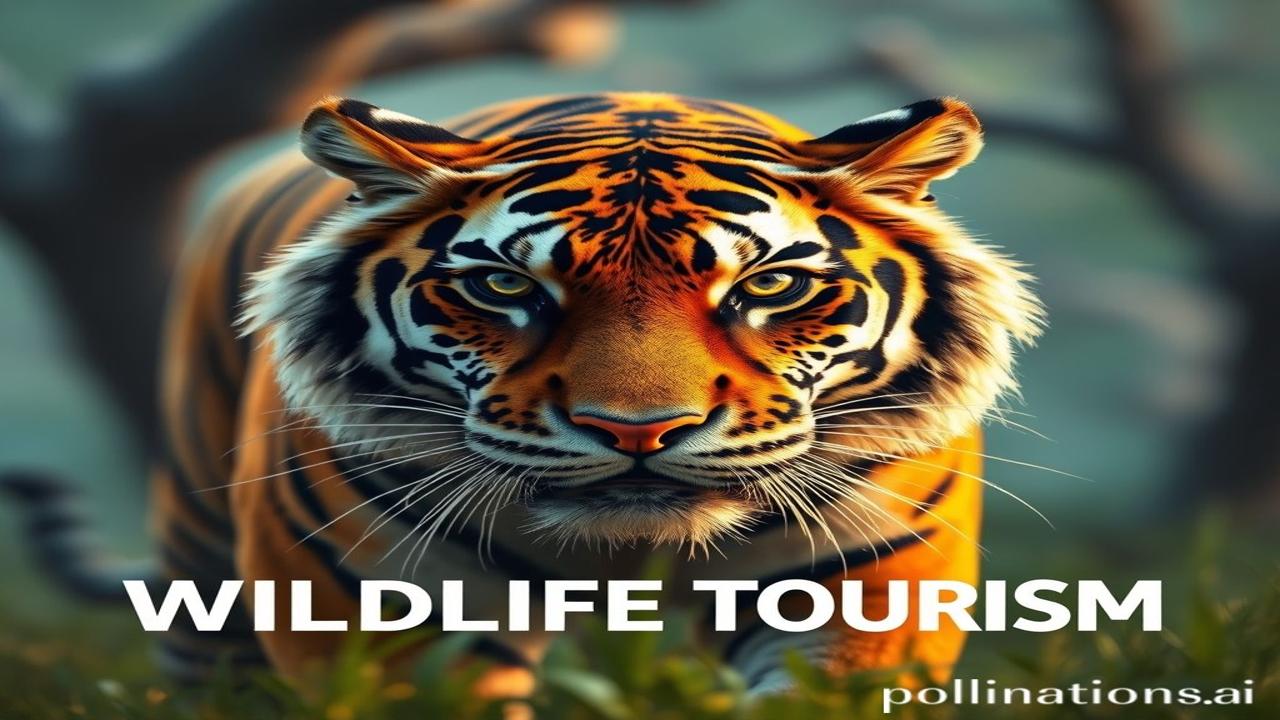Jungle Mein Kho Jaana: Wildlife Tourism Beyond Tigers – Tigers Se Aagey!
Kabhi kabhi aisa lagta hai, jaise jungle hume bula rahe hain… ek anjaan si awaaz, ek purani kahani. Hum sabhi ne tigers ke baare mein toh bahut suna hai, unke shaan ke baare mein, unke dahad ke baare mein. Par kya aap jaante hain, India ke jungle mein tigers se bhi zyada kahaniyan chhupi hain? Kya aap taiyyar hain unkahaniyon ko sunne ke liye, jungle ke uss anjaan safar par chalne ke liye?
Bharat Ke Jangalon Ki Shaan: Tigers, Aur Unse Bhi Aage! (Historical & Cultural Context)
Wildlife tourism in India, especially around tigers, exploded in popularity in the late 20th and early 21st centuries. Project Tiger, launched in 1973, was a pivotal moment. It focused on tiger conservation and, indirectly, fueled tourism around tiger reserves. But honestly, focusing solely on tigers means we’re missing a whole ecosystem, a symphony of life!
India’s rich biodiversity, from the Himalayas to the Western Ghats, offers so much more than just tigers. We have the elusive snow leopard in Ladakh, the one-horned rhinoceros in Assam, the Asiatic lion in Gujarat, and countless species of birds, reptiles, insects, and plants that are integral to our natural heritage. The problem is, they often get overshadowed by the ‘tiger mania’. We forget that these forests are not just tiger territories; they are complex ecosystems with their own delicate balance, crucial to the environment and our own survival.
Jungle Jeevan: Log Aur Jungle Ka Rishta (Deep Dive with Human Element)
Imagine a Gond tribal family in Madhya Pradesh. They live in harmony with the forest, their lives intrinsically linked to its well-being. Dada, the elder of the family, knows every tree, every animal, every path. He can tell you which berries are safe to eat, which plants can heal, and where the sloth bear likes to sleep. He teaches his grandson, Chotu, the same.
“Chotu,” Dada says, pointing towards a vibrant bird flitting between branches, “yeh ‘Indian Pitta’ hai. Barish aane ki khabar lata hai.”
Chotu looks up, his eyes wide with wonder. He knows tigers are important, but he also knows the jungle is much more than just tigers. It’s the deer that graze peacefully, the langurs that chatter in the trees, the insects that hum their own secret songs. It’s a whole world, and the Gond people are a part of it, protecting it, cherishing it. We need to value their knowledge, their perspective, and support their sustainable coexistence with wildlife, moving beyond simply tiger-centric tourism.
Aaj Ki Dharohar: Biodiversity Ki Pehchaan (Cultural Significance Today)
The problem with our tiger-centric approach to wildlife tourism is that it perpetuates a colonial mindset – focusing on the ‘charismatic megafauna’ at the expense of everything else. Bharatiyata teaches us to value every form of life, to see divinity in the smallest of creatures. Our ancient texts are filled with reverence for nature, for the interconnectedness of all beings.
Today, this mindset needs to be rekindled. We need to promote eco-tourism that is responsible, sustainable, and inclusive. We need to empower local communities, create alternative livelihoods, and educate visitors about the importance of biodiversity. We need to celebrate the lesser-known inhabitants of our forests, the ones that play vital roles in the ecosystem but often go unnoticed. Think of the Indian Giant Squirrel (Malabar Giant Squirrel), a vibrant, colourful creature that spreads seeds throughout the forest!
Kya Aap Jante Hain? (Fun Fact or Myth-Buster)
Log samajhte hain ki sirf tigers hi jungle mein khatre mein hain, lekin asli sach yeh hai ki bahut saare chhoti prajatiyaan bhi khatre mein hain. Many smaller species are actually more vulnerable to habitat loss and poaching because they don’t get the same attention or conservation efforts as tigers!
Jungle Ki Khushboo (Visual & Sensory Layer)
The air is thick with the scent of damp earth and decaying leaves. Sunlight filters through the canopy, dappling the forest floor. The sound of cicadas fills the air, a constant hum punctuated by the calls of birds and the rustling of leaves. You can feel the dampness on your skin, the stillness in the air, the raw, untamed energy of the jungle. It’s a world of its own, far removed from the hustle and bustle of city life.
Ant Mein (Closing Insight or Quote)
“Vasudhaiva Kutumbakam” – The world is one family. This ancient Sanskrit phrase encapsulates the Indian ethos of interconnectedness and respect for all life. Let us extend this respect to the creatures beyond the tiger, acknowledging their importance in the grand tapestry of our natural world. Let’s create a wildlife tourism industry that values the whole ecosystem, not just the apex predator.
